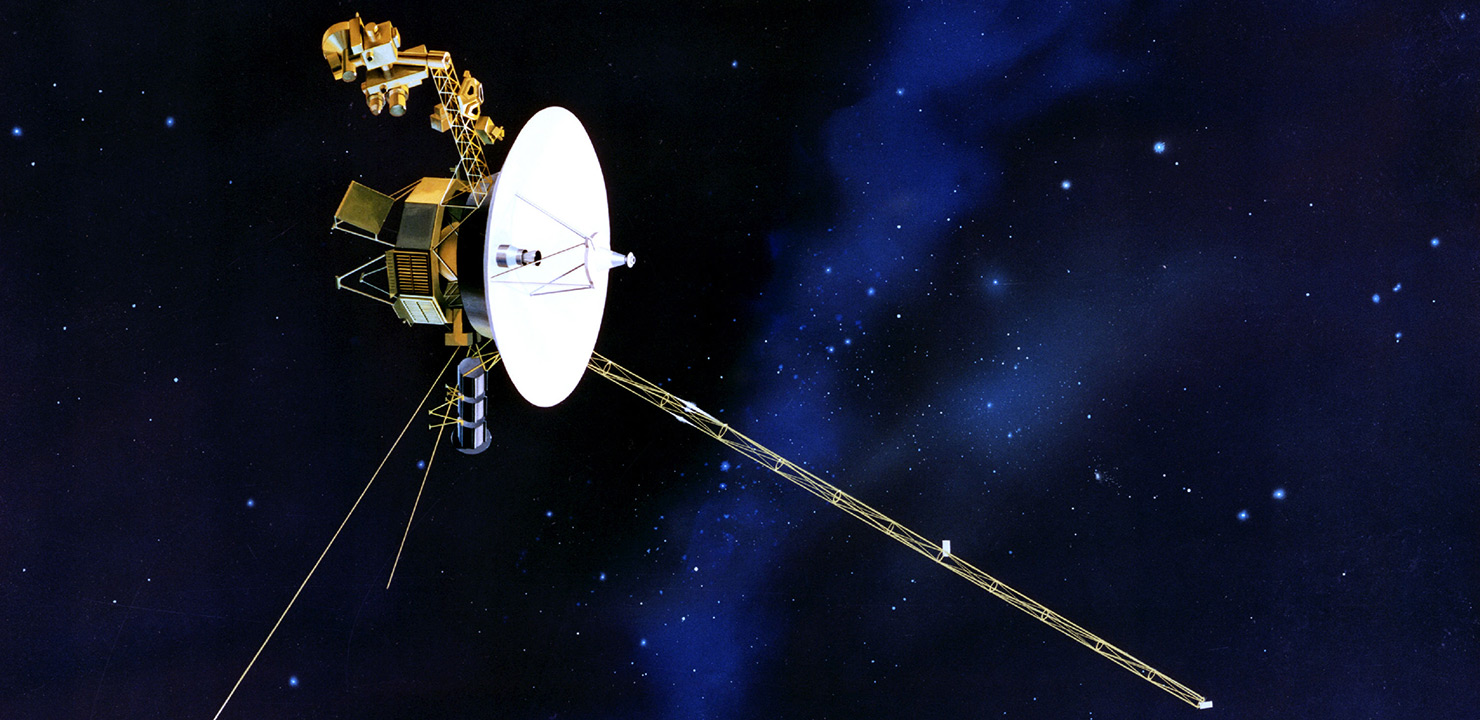
45th Anniversary of Voyager
September 2022 :
Many of you know that I have a giant of a 1977 green Ford LTD. Surprisingly, it still runs, but with having to garage it away from my house, and the fact that it only runs on premium gas, it’s not on the road a lot. But, I still take care of it; plus, a person who lives in its neighborhood takes it for a stroll every few days, so it should last for a long time.
The same year as my Power Car was born, Voyagers 1 and 2 set off on some great adventures. Interestingly, Voyager 1 was launched on September 5, 1977, two weeks after Voyager 2, which lifted off on August 20. This happened because Voyager 1 was sent on a speedier trip, and arrived at their first destination, the planet Jupiter, in March, 1979, when it passed just 200,000 miles above the Jovian surface. Voyager kept imaging the region for several weeks, introducing the world to, among other surprises, the only other body with active volcanoes – the moon Io – a satellite with an incredible ice surface – Europa – and the first glimpse of the very tiny set of rings circling the giant planet. And, then, it was on its way to its next, and last, planetary adventure, beautifully ringed Saturn.
Voyager 2 arrived at Jupiter just a few months later, and continued on to Saturn, also; but, then, the two Voyagers’ journeys split: Voyager 1, after leaving Saturn, turned away from the remaining planets, but it did, in 1990, create the “family portrait,” where, from about 4 billion miles away, it was able to image six of our planets, leaving only Mercury, Mars, and Pluto (still a planet at that time) out of the montage. Voyager 2 continued on to Uranus and Neptune.
Both of these craft are now so far from us that it is said they are in “interstellar space,” although they are still not as far from the Sun as our giant comet nursery, the Oort Cloud. However, both Voyagers have done a great job of showing us closeup images of our outer planets as never before, and, after 45 years, they, like my LTD, are still working, and are expected to continue, for at least several more years.
Illustration of Voyager spacecraft. NASA/JPL



